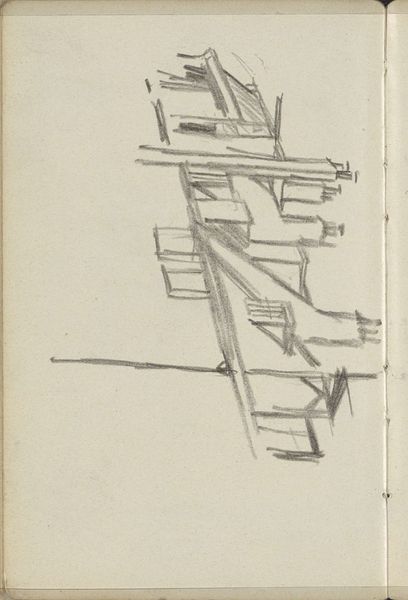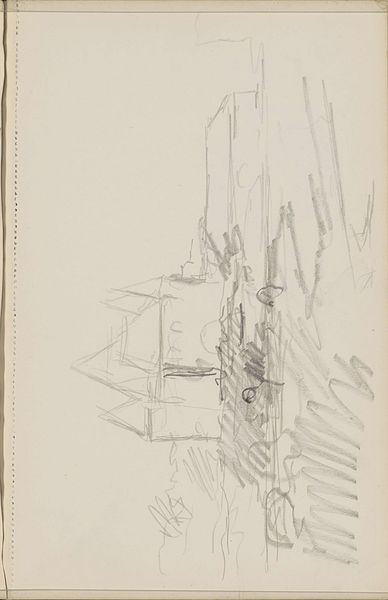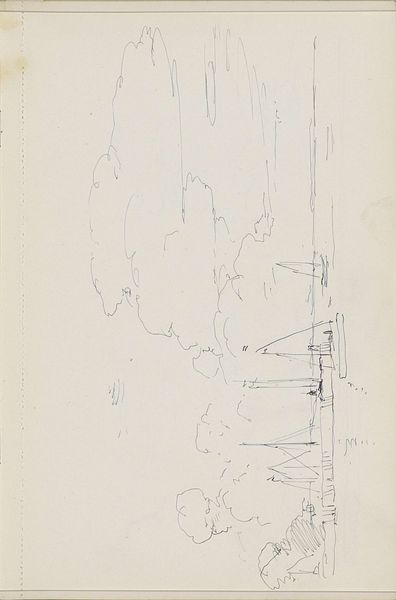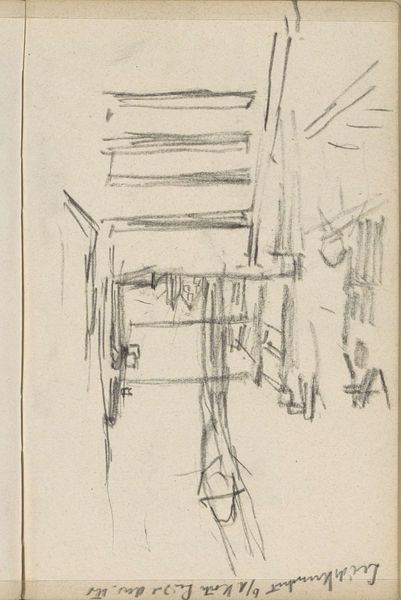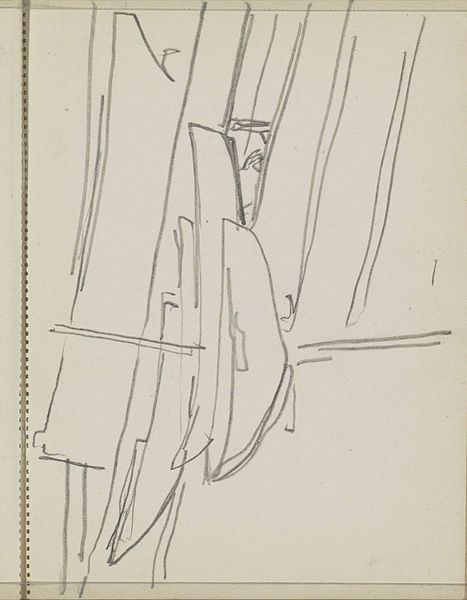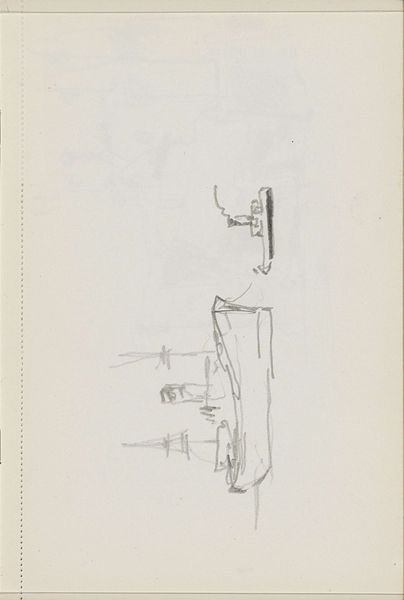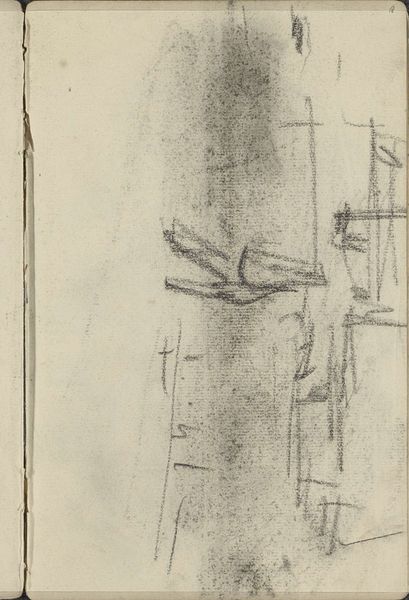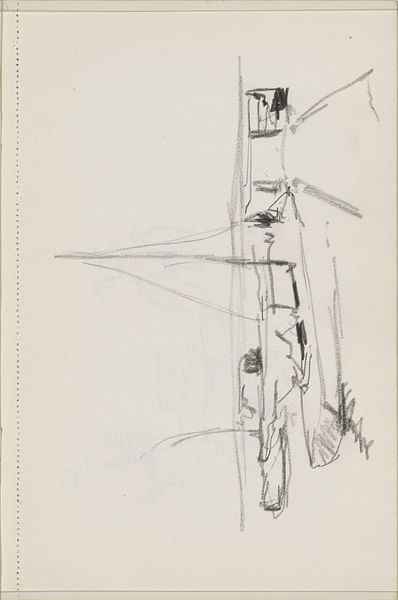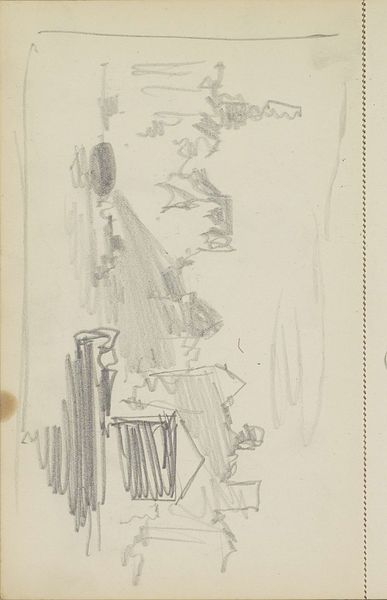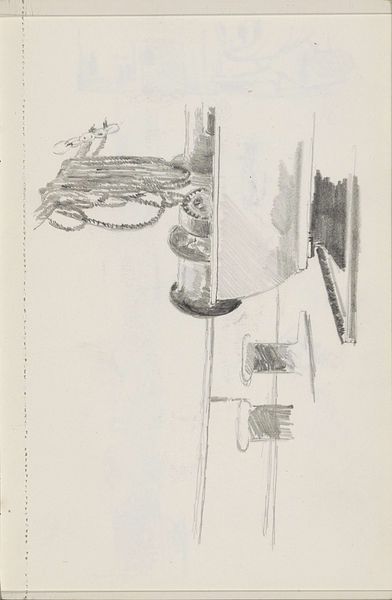
drawing, pencil, architecture
#
drawing
#
geometric
#
pencil
#
architecture
Copyright: Rijks Museum: Open Domain
Editor: This is Cornelis Vreedenburgh’s pencil drawing, "Pillar, possibly from a balustrade," created sometime between 1890 and 1946. I’m immediately struck by the sparseness of the image, the way the artist has captured form with what looks like minimal effort. It feels unfinished, yet complete in its own way. What do you see in this piece? Curator: What intrigues me is the stark contrast between the clearly defined lines of the pillar and the vague shapes behind it. Observe the difference in pencil pressure; the artist utilizes darker, firmer strokes for the pillar and lighter, sketchier marks for the other shapes, possibly furniture. Note the contrast with how the diagonal shading on the pillar plays against its verticality, lending a strange, compelling tension to this piece. Editor: So the technique itself becomes the message? Curator: Precisely. Vreedenburgh focuses our attention on the intrinsic forms. The contrast between what’s defined and what is only hinted at asks us to consider how we perceive and construct space and form. Is it complete or unfinished, functional or simply a play of lines? Editor: That's a perspective I hadn't considered. I was initially drawn to the subject, but the real interest lies in how Vreedenburgh used the pencil. Curator: Indeed. Consider how the sketchiness complicates our reading. We move from depiction towards something more abstract. I wonder if this indicates it as a preparatory work and not intended as a final artistic product in and of itself? Editor: That’s interesting. So it almost becomes an exercise in seeing? Thanks! I'm leaving with so much more to think about now. Curator: And I’ve appreciated this opportunity to more rigorously focus my own seeing on the artwork’s underlying structure.
Comments
No comments
Be the first to comment and join the conversation on the ultimate creative platform.
